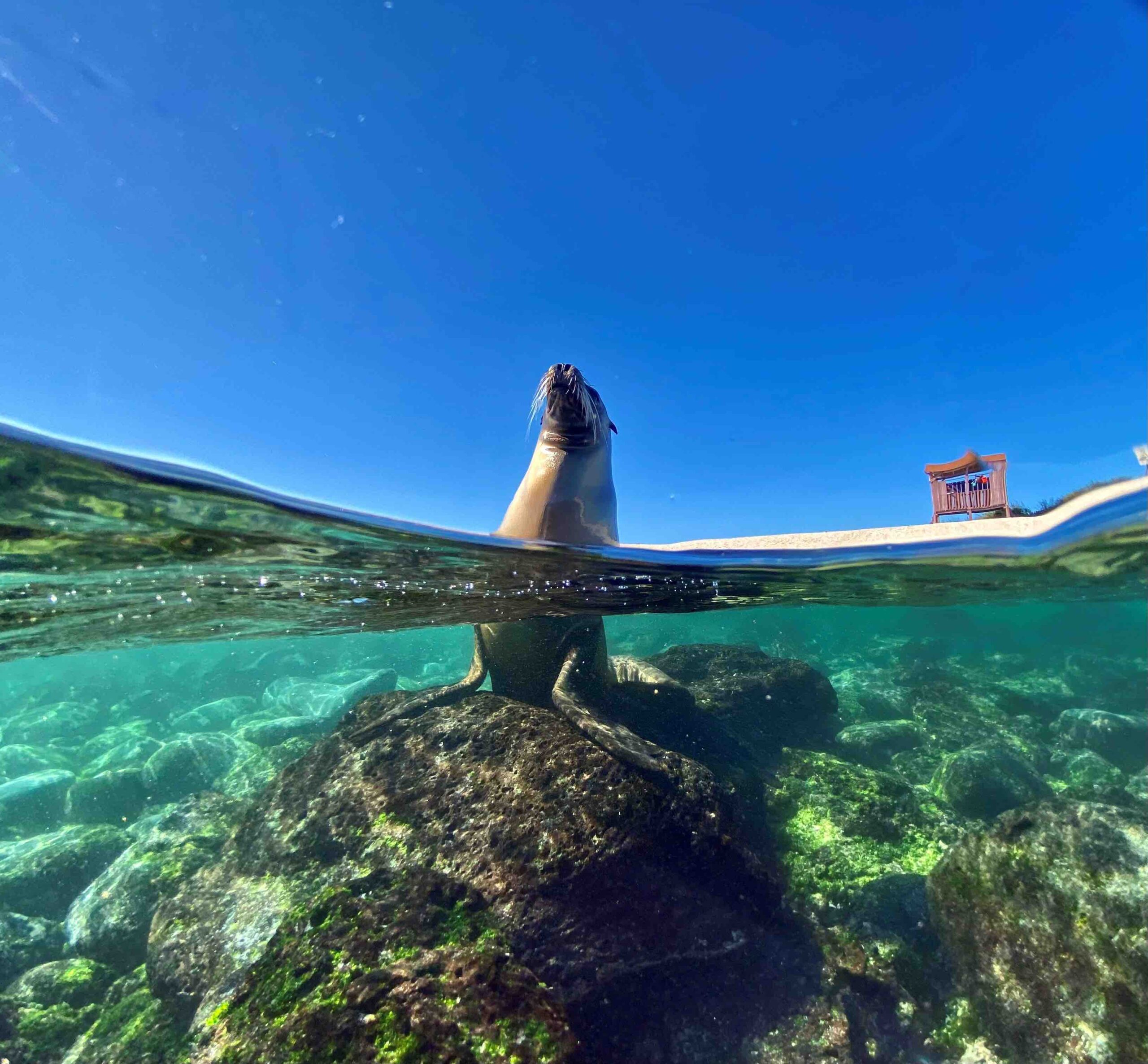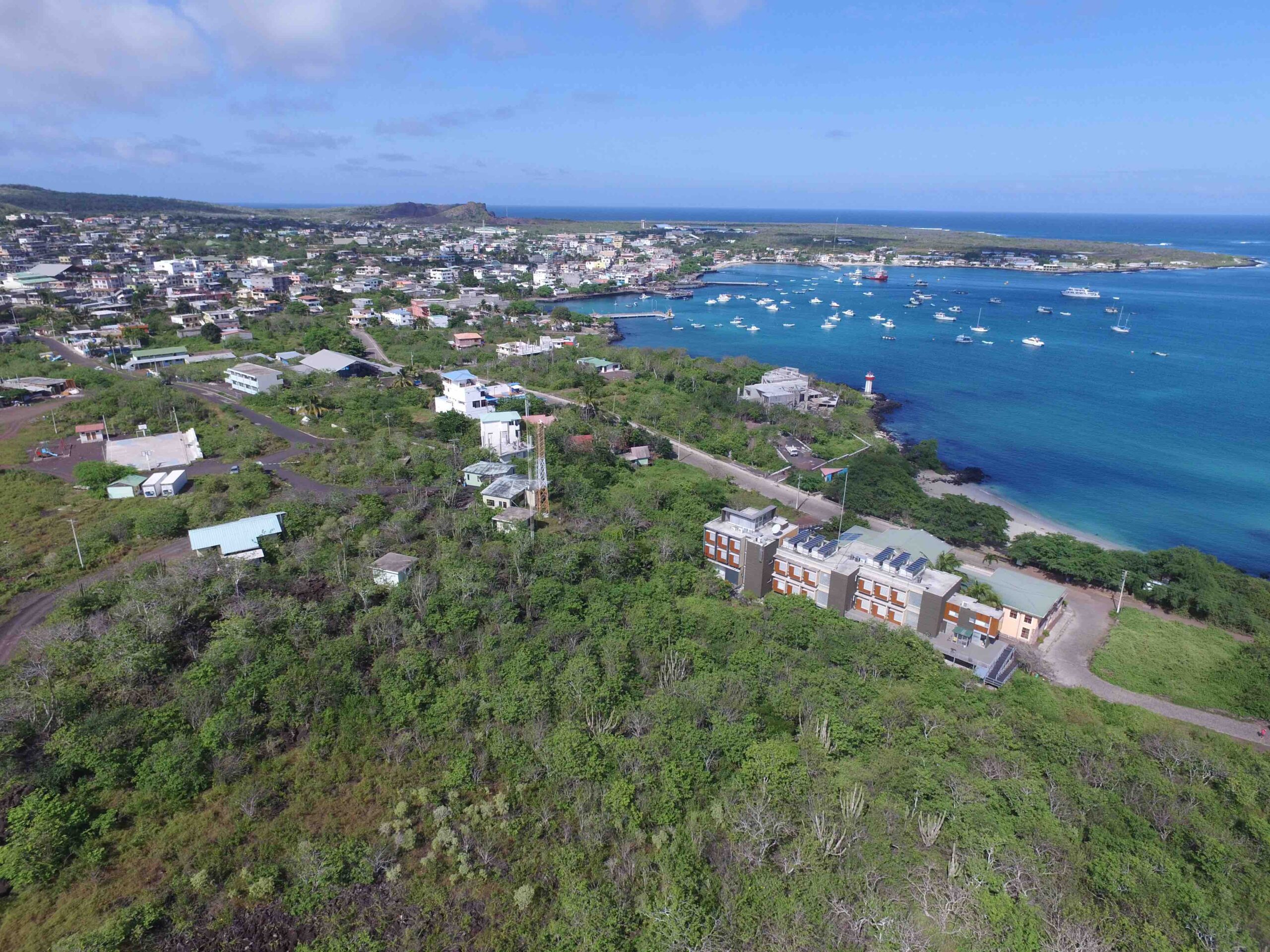Lewbart has conducted research at the Galapagos Science Center since its inception almost 10 years ago and has made 21 trips to the Galapagos over the years. Many of these were as part of an international team of researchers that helped to establish baseline health parameters for various wild species in the archipelago. In September of 2020, due to the pandemic, Lewbart was unable to travel to Galapagos and instead advised from afar as the GSC partnered yet again with the Galapagos National Park (GNP) to conduct health assessments of 30 juvenile giant tortoises to allow them to make their way into the wild as part of the GNP’s breeding and repatriation efforts for this vulnerable species.
June 2021 was different. This time, with the majority of the Galapagos population vaccinated and Lewbart vaccinated himself, the opportunity to return to the Islands and the unique animals Lewbart strives to protect led him back to the GSC after an almost two-year break.
“Returning to San Cristóbal and the GSC was amazing and very special. It was like coming home after a much-too-long time away. But with the support of my friends and colleagues at the GSC and throughout the archipelago it was so easy to pick up where we left off in 2019. There were lots of virtual hugs and warm reunions before we got busy collecting data and exploring a variety of research sites.”
In a mere three weeks, Lewbart – working with a small team – managed to conduct health assessments and evaluations of 18 six-year-old San Cristóbal tortoises that were all deemed healthy and will eventually be released by the GNP into the wild. That was just the beginning. Lewbart and team also conducted valuable research on the Galapagos sea lion, green sea turtles and the Española Nazca booby during the team’s short visit – all with different research objectives in mind.
Lewbart has seen Galapagos sea lions in need of care and on occasion needing blood after an injury. Animals, like humans, have different blood types and Lewbart wanted to explore whether the Galapagos sea lion could accept blood from a donor of the same species. Lewbart and a team from GSC and GNP spent two days at Playa Mann and Playa de los Marinos catching sea lions in order to take small amounts of blood from over 20 sea lions and conduct 50 cross matches at the GSC Microbiology Lab, which is the first time anyone has conducted cross-matching with this species. Lewbart was pleased to report there were no serious reactions and no clotting during the process which means that if a Galapagos sea lion needs a blood transfusion in the future there are great resources to protect this critical species.
Next, Lewbart’s team conducted invaluable research to ascertain whether microplastics can be found in the feces of the green sea turtle – which would highlight the type and density of microplastics that exist in the pristine waters of the Galapagos. Fifty green sea turtles were captured and sampled in two locations – one in Galapagos and the other off mainland Ecuador – which will provide a much needed comparison to better understand the scale of the microplastics in the surrounding waters – a larger research project being conducted by GSC researcher Juan Pablo Muñoz.

In the final days of the trip, Lewbart embarked on a journey to Española Island in order to conduct health assessments and measure tourist impacts on the Espanola Nazca booby. This is a continuation of a larger research project led by USFQ researchers Susana Cardenas and Carlos Valle. Despite challenging conditions of high wind, heat and dust and the need to take blood samples within five minutes of capture to obtain accurate results, 108 animals were sampled. These samples came from two different locations – one near tourists and others in a remote location – in order to measure stress levels in this species and better understand how tourism may or may not be impacting its health.
Lewbart’s recent research trip to the GSC and the broader Galapagos Islands brings with it such a breath of hope and positivity. As we continue to adapt to the new normal since the pandemic started, it is refreshing to start welcoming researchers to the GSC to continue collaborating with the Galapagos National Park Directorate to preserve not only these iconic animals but their environments for the future.





